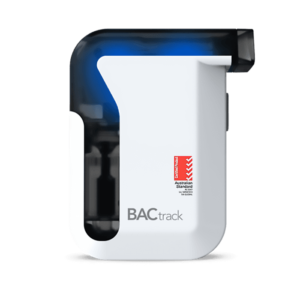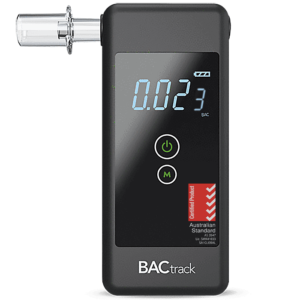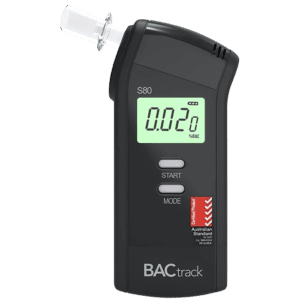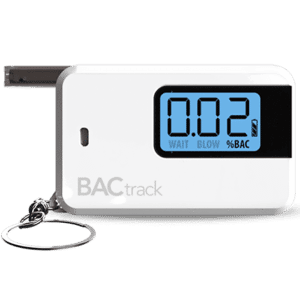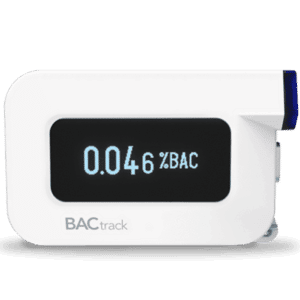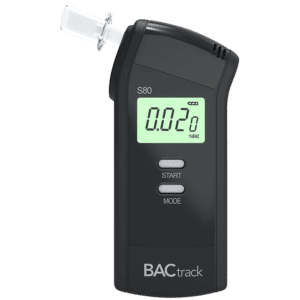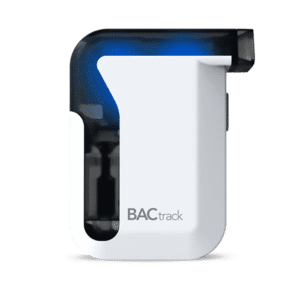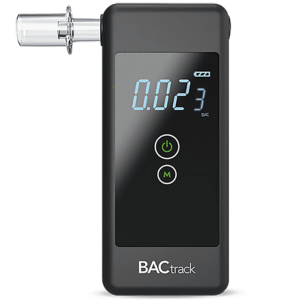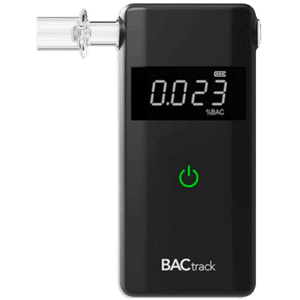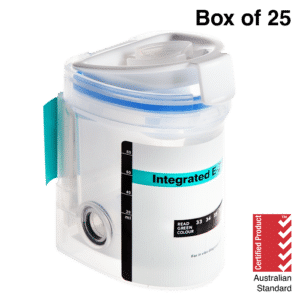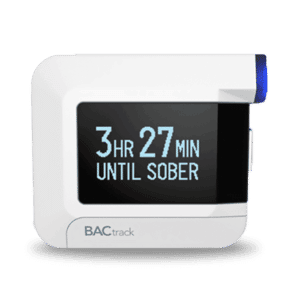Alcohol Calculator: A Complete Guide to Calculate Alcohol Intake
29 February, 2024
Knowing the level of intoxication after alcohol consumption is vital for personal safety and legal reasons. An alcohol calculator can help individuals estimate their Blood Alcohol Content (BAC) and determine whether it is safe to drive or engage in other activities. It is an online tool or application that requires inputting the number of drinks and personal information to measure the BAC. Thus, it is important to provide accurate information to get reliable results.
Excessive drinking can pose risks to the individual and those around them. It impairs judgment, perception, motor skills, and reaction time, thereby increasing the likelihood of accidents and injuries. It may also lead to drinking disorders and other health illnesses. Therefore, it is vital to monitor the alcohol intake and stay within the safe limits. This comprehensive guide will help guide on how the BAC calculator works, how to use it, and the legal considerations when using one.
Jump to a Section:
- What Is an Alcohol Calculator?
- How Does an Alcohol Calculator Work?
- Importance of Using Alcohol Calculators
- Understanding the BAC in an Alcohol Calculator
- Standard Drink Measurement in Alcohol Calculators
- The Legal BAC Limits When Using an Alcohol Calculator
- How to Use an Alcohol Calculator
- Understanding Alcohol by Volume in Alcohol Calculators
- Are There Other Types of Alcohol Calculators?
- Personal Breathalysers as Your Alcohol Calculator
What Is an Alcohol Calculator?
An alcohol calculator is a program that helps individuals estimate their BAC or blood alcohol level. It is based on the number of drinks and individual factors like weight, gender, and rate of consumption. Moreover, it uses a formula to calculate the BAC and provides an approximation of intoxication levels. The results are available after a few seconds.
There are plenty of BAC calculators available online. Before using one, it is important to see what information it needs for the computation. Generally, the more specific the data, the more accurate the results can be. Some calculators may differ in results, so it is essential to use one that is accurate and reliable.
It is important to note that BAC calculators provide an estimate of the alcohol concentration in the body. It may not be 100% accurate for every individual, as certain factors may not be considered. While they are a helpful tool, it is always best to err on the side of caution and avoid driving if there is any amount of alcohol in the system.
Purpose of Using One
- A BAC calculator helps consumers track their alcohol intake and stay within the recommended limits.
- Individuals can receive an estimate of their current BAC and determine whether they are above the legal limit for driving.
- It can be useful for people who are monitoring their alcohol consumption for health or personal reasons.
- It can provide insights into how different types of alcohol affect their body and how quickly they become intoxicated.
- Helps individuals determine how many standard drinks they can consume before reaching certain BAC levels.
- It can guide people on how much alcohol they can consume in social settings and make informed decisions.
How Does an Alcohol Calculator Work?
An alcohol calculator works by taking into account various factors, such as the number of drinks consumed and time spent drinking. First, the calculator will ask for the person’s weight, gender, the number of drinks, the type of alcohol, and the amount of time over which the drinks were consumed. This information will calculate the rate at which the body metabolises alcohol.
The calculator also assumes that alcohol intake is consistent over time. For example, if a person inputted that they had three drinks in one hour, the calculator would assume they had one drink per 20 minutes. Thus, the rate of the BAC increase is different with each person.
Additionally, it is vital to note the rate of consumption and the time since the last drink. This considers the average rate at which the liver metabolises alcohol at a specific point in time. Each factor is assigned a weight or value in the equation, and when combined, it produces an estimated BAC.
The Widmark Formula
The Widmark Formula is a mathematical equation used to estimate the BAC. It is based on body weight, gender, number of drinks, and time spent drinking. It also takes into account the hydration level, as alcohol is more soluble in water than in fat.
The formula is as follows: BAC = (Alcohol consumed in grams / (Body weight in grams x gender constant) x 100. In this formula, females should use 0.55 and males 0.68 for the gender constant. This reflects the average rate at which the body metabolises alcohol. Remember, the equation is not exact, as individual variations can affect its accuracy.

Importance of Using Alcohol Calculators
Using an alcohol calculator is important for a number of reasons. Firstly, they provide a quick and easy way to estimate the BAC. This can help individuals make informed decisions about their drinking and avoid negative consequences. In particular, it enables people to get a better understanding of how alcohol affects their bodies.
Secondly, they are useful for tracking personal alcohol consumption and staying within the recommended levels. Many health organisations advise limiting alcohol intake to reduce the risk of developing health problems such as liver disease, high blood pressure, and certain types of cancer. By using a calculator, individuals can make adjustments as needed to stay within healthy limits.
Lastly, it is a helpful tool for tracking the level of risk. This can be valuable for people who are moderating or cutting back on alcohol use. It can help set goals to control drinking over time. In some cases, it can give a better understanding of alcohol and sleep patterns. Overall, using a BAC calculator promotes responsible drinking and improves health, safety, and well-being.
Safety Should Always Be a Priority
Heavy drinking can lead to various safety risks. High BAC levels can impair coordination, posing hazards when it comes to driving or operating heavy machinery. That is why safety is a top priority during alcohol consumption. By using alcohol monitoring tools, it allows individuals to limit their intake and prevent severe intoxication.
Aside from the acute safety risks, chronic use may also lead to serious health issues and addiction. Thus, health practitioners always advise on moderate drinking. Nevertheless, it is essential to note that the use of BAC calculators is for informational purposes only. The results do not provide a definitive measure of impairment.

Understanding the BAC in an Alcohol Calculator
A thorough understanding of the BAC can help in determining how the alcohol calculator works. BAC is the amount of alcohol present in the bloodstream. It is typically expressed as a percentage. The BAC rises relative to the number of drinks and how quickly they are consumed. In an average build, one standard drink will raise the BAC by approximately 0.01 to 0.03% in an hour.
When a person consumes alcoholic beverages, it rapidly enters the bloodstream through the stomach and small intestines. Then, the liver metabolises alcohol at a steady rate, which is why BAC levels rise and fall over time. This factor helps estimate how intoxicated a person may be and how long it may take for alcohol to be eliminated from the system.
Since the rate of metabolism varies per person, the increase of BAC will also differ despite consuming the same amount of drinks. Furthermore, individuals have different tolerance levels. Thus, people can experience intoxication at various BAC levels. By monitoring consumption, people can avoid dangerous levels of impairment.
Factors Affecting BAC
- Rate of consumption: The amount of alcohol consumed in a period of time.
- Types of drink: Different alcoholic beverages contain varying percentages of alcohol or standard drinks.
- Body weight: Heavier individuals tend to have lower BAC because of their larger volume of blood and water, which can dilute alcohol.
- Gender: Women tend to have higher BAC levels than men of the same weight due to differences in body composition and metabolism.
- Food consumption: Eating food while drinking alcohol slows down the rate of absorption, resulting in a lower BAC.
- Medication: Certain medicines can interact with alcohol and affect BAC levels.
Standard Drink Measurement in Alcohol Calculators
One key aspect of alcohol calculators is the use of standard drink measurements. It refers to the amount of pure alcohol in a drink. It allows for easy comparison between different types of alcoholic beverages, as they may vary in strength and volume. Therefore, it provides a standardised guide for people to make informed decisions about their alcohol intake.
In Australia, one standard drink is 10 grams of alcohol. This measurement is based on the average capacity of the body to metabolise ethanol. Each beverage type varies with the number of standard drinks in one serving or packaging. For example, a glass of red wine contains an average of one standard drink, while one bottle contains eight standard drinks. On the other hand, a can of beer has an average of 0.08 to 1.4 standard drinks.
If a person has taken two cans of beer, they should input two in the required field. This knowledge allows an individual to input the correct information into the calculator to obtain a more accurate estimation of their BAC. It can also help them track their intake and avoid overconsumption.
Effects of One Standard Drink
One standard drink can have various effects on the body, depending on individual factors. On average, it may result in mild relaxation, enhanced mood, and lowered inhibitions. A person may feel more sociable and more carefree. Additionally, it can increase the sense of euphoria due to the release of dopamine in the brain.
However, some people may also experience negative effects, such as impaired coordination, judgment, and decision-making skills. It can also affect concentration and memory, making it difficult to focus or retain information. Other effects may include increased heart rate, decreased reaction time, and blurry vision.

The Legal BAC Limits When Using an Alcohol Calculator
The main use of an alcohol calculator is to determine if the BAC level is within the legal alcohol limit. Law enforcement imposes a legal limit, which is the maximum BAC level allowed for individuals to operate a vehicle safely. In Australia, the legal limit is 0.05% BAC. These limits are in place to ensure road safety.
Moreover, other people with a limited license, such as learner drivers and probationary license holders, have a stricter limit of 0.00-0.02% BAC. This is because a slight impairment may lead to a higher risk of accidents for inexperienced drivers. Therefore, it is crucial to check the alcohol level before getting behind the wheel.
In addition to the legal limit for driving, there are also other circumstances where alcohol consumption may be restricted. For example, high-risk workplaces implement a zero-alcohol tolerance to prevent accidents and ensure the safety of workers. Any detectable amount of alcohol may lead to disciplinary actions. Understanding these limits and regulations is crucial to avoid legal trouble.
Penalties for Going Over the BAC Limits
If a person is caught driving with high BAC levels, they may face serious consequences. The penalties for going over the limit vary depending on the jurisdiction and severity of the situation. These can include fines, license suspension, and even imprisonment. Repeat offences may also require mandatory attendance to alcohol education programs and installation of an alcohol interlock device.
Police officers conduct roadside breath tests to determine the BAC. Refusal to take the test may result in similar penalties as driving over the legal limit. Therefore, it is essential to monitor the alcohol intake to stay within safe limits.

How to Use an Alcohol Calculator
Using an alcohol calculator is simple and can be done in a few steps. First, input the number of standard drinks consumed. This could be in the form of glasses of wine, cans of beer, or shots of spirits. A container often includes this information or asks a server. An alcohol guide can also provide the standard drink equivalent for different types of beverages.
The second step is to input body weight, age, gender, and other necessary fields. Once complete, click on the calculate button to obtain the results. The calculator will display the BAC within seconds. It is important to provide accurate data in order to get reliable results. Additionally, individuals may track their BAC by using the calculator every hour to see if the changes.
BAC calculators and charts can only provide an approximation of the blood alcohol concentration. This should not be the sole basis for determining whether it is safe to drive or not. Furthermore, if a person has consumed alcohol, it is best to refrain from driving and ensure the BAC has returned to 0.00%.
Tips & Tricks
- Know the exact weight, standard drinks for each beverage type, and other relevant factors before consuming alcohol.
- To slow down the increase of BAC, eat food and stay hydrated in between alcoholic drinks.
- Limit the alcohol intake to one standard drink per hour.
- Remember that alcohol peaks in the body approximately one hour after consumption, and plan accordingly.
- Assign a designated sober driver when planning to drink alcohol.
- Alternatively, use public transportation or ride-sharing services if unable to drive.
- Know personal limits and tolerances. Listen to the body and stop drinking once the intoxicating effects become noticeable.
Understanding Alcohol by Volume in Alcohol Calculators
Alcohol by Volume (ABV) is a standard measure of the strength of ethanol in an alcoholic beverage. It represents the amount of alcohol present in a drink compared to the total volume of liquid. Understanding ABV is essential when using alcohol calculators to determine the total amount of alcohol taken in a given period of time.
In general, the higher the ABV percentage of a drink, the more alcohol it contains. For example, a standard beer contains an ABV of around 3.5-7%. Meanwhile, spirits like vodka or whiskey can have ABV percentages upwards of 40-50%. This means that a smaller amount of high-ABV drinks may result in a higher BAC compared to consuming a larger amount of lower-ABV drinks.
Moreover, mixing two kinds of alcohol with different strengths causes a change in volume. To calculate ABV, divide the volume of alcohol by the total volume of the drink. Then, multiply the result by 100 to get the percentage. By factoring in the ABV, the calculator can produce a more accurate estimation of the BAC.
How ABV Affects BAC
Higher ABV percentages in alcoholic drinks will result in a quicker increase in BAC. This is because the higher the ABV, the more alcohol is present in the same volume of liquid. In addition, the body metabolises alcohol at a relatively consistent rate, so the higher the ABV, the more alcohol is being processed by the body at once.
The effect of ABV on BAC is also influenced by how much a person drinks and how quickly they consume it. For example, drinking a large amount of a high-ABV beverage can increase the BAC quickly, leading to intoxication.

Are There Other Types of Alcohol Calculators?
Other types of alcohol calculators are available besides the online ones. One type is the Standard Drink calculator. This tool helps individuals determine how many standard drinks they have consumed based on the type and quantity of beverage ingested. Another kind is the Blood Alcohol Elimination Calculator. This tool estimates how long it will take for the BAC to return to zero from the last intake.
Another type is the use of a single-use alcohol tester. It is a portable tool that measures the alcohol content through a breath sample. It consists of a tube filled with yellow crystals. When a person breathes into the tube, the crystals change colour based on the alcohol content in their breath, providing an immediate indication of their BAC level.
Additionally, the electronic breathalyser is a more advanced tool that provides a digital reading of BAC levels. This device is common in roadside screenings to determine if a person is driving under the influence of alcohol. They are also available for personal use, allowing individuals to monitor alcohol consumption.
What Is the Most Convenient and Reliable?
When it comes to convenience and reliability, the electronic breathalyser offers the most accurate and immediate results. The device is easy to use and does not require complicated procedures. Furthermore, it can determine the BAC through the breath, providing a more reliable measurement in real-time.
The breathalyser is also portable and provides a quick estimation of the intoxication level. Advanced devices can be comparable to the ones that police officers use. Moreover, they are convenient to use anytime, anywhere, making them a practical tool for both personal use and in professional settings. Nevertheless, proper usage and regular maintenance are essential to get accurate results.

Personal Breathalysers as Your Alcohol Calculator
Personal breathalysers are an essential device, especially for regular alcohol consumers. It is similar to the units that police use but is more affordable. However, these devices may utilise different types of sensors. The first type is a fuel cell sensor. It has high specificity to ethanol, providing accurate BAC results. The second one is a semiconductor sensor, which is less expensive but sensitive to other substances, such as acetone.
Breathalysers also come in various features. When choosing a personal device, consider factors such as accuracy, reliability, ease of use, and portability. The features may include a digital display screen, adjustable warning limits, and rechargeable batteries for convenience. Some models may have advanced features like Bluetooth connectivity for data tracking and app integration for more detailed analysis.
To use a breathalyser as an alcohol calculator, simply turn on the device and wait for the countdown timer to reach zero. At the signal, give a steady blow into the mouthpiece for five seconds or longer. Then, wait for the BAC results, which will show within a few seconds. This straightforward process provides easy updates.
Advantages of Using a Personal Breathalyser
- Accuracy: Since the device tests the breath directly, it can provide a more precise measurement of the alcohol content. Additionally, it minimises the risk of relying on guess estimates only.
- User-friendly: It is easy to operate, with most models having a one-touch system. The device is ready to use within seconds.
- Multiple testing: The breathalyser allows multiple retesting for easy tracking.
- Cost-effectivity: A personal breathalyser is more affordable than professional-grade devices.
- Portability: The device is easy to carry in a purse or pocket.
- Non-invasive: It does not require any blood samples or intrusive procedures, making it a safer and more comfortable option.
Conclusion
An alcohol calculator is a helpful tool for individuals to gauge their intoxication levels and make informed decisions. It takes various factors into account, such as the number of drinks and weight, to estimate the BAC. In addition, the purpose of monitoring the BAC is to prevent untoward incidents due to severe impairment. This includes legal charges due to drink driving. Therefore, knowing the variables that can affect the BAC levels is crucial for accurate results.
Aside from online calculators, there are also electronic breathalysers available for more efficient use. These devices are portable, user-friendly, and cost-effective, making them a practical choice for alcohol monitoring. It can also raise awareness of how the body reacts to alcohol. Personal breathalysers like the BACtrack from Breathalysers Australia can provide more precise measurements. Overall, incorporating a monitoring device into a regular alcohol consumption routine can promote responsible drinking habits.






















